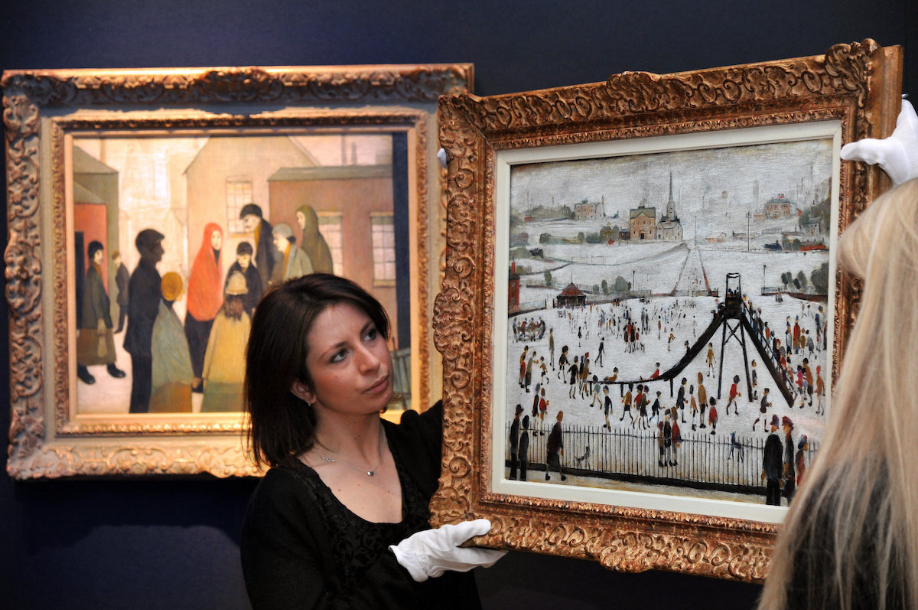Art News: Collectors’ Toolkit: Why Is Art Finance a Growing Business?
6/15/2020

At the beginning of coronavirus lockdown, Bloomberg and other outlets ran articles on an uptick in business in the art finance sector. The major auctions are set to happen in the forthcoming weeks, and they will act as the first major benchmark for the market since the coronavirus crises began. But the growth of art finance is a sign that business is still going strong.
During the coronavirus crisis, rather than sell their art in an uncertain market, many collectors are turning to art for liquidity, using it as collateral for a loan. Barbara Chu has been a partner at Emigrant Bank Fine Art Finance for 25 years, serving as an advisor to major private and public investors and developing new lending categories. “We’re very busy providing solutions,” Chu said.
She continued, “Even people who don’t need immediate liquidity are gathering dry powder. We have been working with a lot of clients to provide solutions to either cover margin calls, seed other investments—people want to be able to have the liquidity to take advantage of opportunistic investments or just bolster their liquidity during this incredibly volatile period, because we don’t know how long this is going to last.”
Some of those collectors are using the liquidity to reinvest in art, but the discounts are not yet there.
“People are looking for opportunistic investments in every sector,” she said. “In the art world, there has not yet been deep discounting. And most people who have really good stuff are not necessarily up against having to sell it right now.”
“In this kind of an environment there is a flight to quality,” Chu added. “People go after the triple A stuff and the triple A stuff is not necessarily going to be traded at a discount. It’s important that people recognize that there are no benchmarks until we see how the summer sales perform. And even then, we may or may not be able to discern what’s really going on throughout the market segments because each one is going to behave differently.”
For collectors looking to make decisions about what to do with their art at this time, Chu stressed the need for “impartial, independent, objective advice. If you get advice from an auction house or a dealer, it’s different because they are motivated to try to get things to sell. And there are things that you may not want to sell right now because, A, it’s going to hold its value, or, B, it’s not going to get you the best price. Or, C, it’s something that the market may not be able to absorb right now. And you don’t want to burn it.”
Companies like the London-based Fine Art Fund and the New York–based Athena Art Finance do art secured lending based only on the value of the art (rather than against the borrower’s total net worth, as is the case at banks), lending 50 percent of the work’s value for a period generally lasting one to two years.
Last month, Freya Stewart, CEO of art finance at the Fine Art Group, told CNN Money that during this period she has seen a threefold increase in loan inquiries.
Art-based lending is a burgeoning business. Last year, the accounting organization Deloitte measured the business at $20 billion–$25 billion.
Drawing on her background in finance, Stewart observed, “In 2008–09, we saw that institutional lenders and hedge funds used only one or two sources of capital for their loans. In 2009–10, they started diversifying massively, to around five or six lenders. From what I’m seeing, you’re definitely seeing sophisticated collectors behaving a bit more like that now. I’ve had at least two cases in the last month where people came to us keen to diversify their lender base.”
Stewart said she has recently seen collectors who weren’t ready to pull the trigger the first time around come back to her. “I’m working with somebody today, and we did all this work a year ago. He decided that it just wasn’t quite right at the time. Now he phones up and says, ‘I need the money super quick, in a couple of weeks. Can you do it?’ Yes. Done. We reissued the new term sheet within an hour, and we’re good to go.”
Naomi Baigell, managing director of marketing and client relationships at Athena Art Finance, has seen something similar. “We are a fairly different specialty lender, and people often feel they need to get to know us a little bit,” she said. “But recently we got one new client that I had never met before. He found us through an ad we did with the Armory Show as the main sponsor of the fair. He just called us. And now we are finalizing the deal.”
Due to the lockdown, she has never met the client in person, and had to have his art inspected for valuation purposes at his home while he was not there.
Stewart said she has been a bit more conservative at this time. “We are reducing our loan-to-value—not massively, maybe just five percent for new loans—so that’s another way of managing some risk. You are striking a balance between both loan-to-value risk and the valuation risk.”
